10 Simple Ways to Reduce Your Carbon Footprint in the City
In
today's rapidly urbanizing world, the environmental impact of city living is
becoming increasingly evident. From transportation emissions to energy
consumption, urban residents contribute significantly to carbon emissions and
environmental degradation. However, there are numerous simple yet effective
ways for city dwellers to reduce their carbon footprint and live more
sustainably. In this article, we'll explore 10 practical strategies that urban
residents can implement to minimize their environmental impact and contribute
to a greener, more sustainable future.
Below Mention "10 Simple Ways to Reduce Your Carbon Footprint in the City"
- Opt for Sustainable Transportation
- Embrace Carpooling and Ride-Sharing
- Invest in Electric or Hybrid Vehicles
- Reduce Energy Consumption at Home
- Support Renewable Energy Sources
- Practice Sustainable Water Usage
- Minimize Waste Generation
- Support Local and Sustainable Food
- Green Your Commute
- Get Involved in Community Sustainability Initiatives
- Conclusion
- FAQ Simple Ways to Reduce Your Carbon Footprint in the City
Opt for Sustainable Transportation :
One of the most impactful ways to reduce your carbon footprint in the city is by choosing sustainable transportation options such as walking, cycling, or using public transit. By minimizing your reliance on personal vehicles, you can significantly reduce greenhouse gas emissions and air pollution. Walking and cycling are not only environmentally friendly but also offer numerous health benefits. If walking or cycling is not feasible for longer distances, consider using public transportation, such as buses or trains, which have lower emissions per passenger mile compared to private cars. Additionally, many cities are investing in infrastructure for alternative modes of transportation, such as bike lanes and pedestrian-friendly streets, making it easier and safer to choose sustainable transportation options.
Embrace Carpooling and Ride-Sharing:
If you need to use a car, consider carpooling or ride-sharing services like UberPOOL or Lyft Line. Sharing rides with others not only reduces emissions but also helps alleviate traffic congestion and save money on transportation costs. Carpooling allows multiple individuals to share the same vehicle for commuting or traveling, reducing the overall number of cars on the road and the associated emissions. Ride-sharing services connect passengers with drivers heading in the same direction, providing a convenient and affordable alternative to traditional taxis or personal vehicles. By embracing carpooling and ride-sharing, urban residents can reduce their carbon footprint while also enjoying the social and economic benefits of shared mobility.
Invest in Electric or Hybrid Vehicles :
For those who require a personal vehicle, opting for an electric or hybrid car can significantly reduce emissions compared to traditional gasoline-powered vehicles. Electric vehicles (EVs) use electricity stored in batteries to power an electric motor, producing zero tailpipe emissions. Hybrid vehicles combine an internal combustion engine with an electric motor, offering improved fuel efficiency and lower emissions compared to conventional vehicles. As electric vehicle infrastructure continues to expand, owning an EV becomes an increasingly viable option for urban residents. Many cities offer incentives and rebates for purchasing electric vehicles, making them more accessible and affordable for consumers. By investing in electric or hybrid vehicles, urban residents can reduce their reliance on fossil fuels and contribute to cleaner air and a healthier environment.
Reduce Energy Consumption at Home:
Take steps to minimize energy consumption in your home by investing in energy-efficient appliances, using programmable thermostats, and ensuring proper insulation. Energy-efficient appliances, such as ENERGY STAR-rated refrigerators, washing machines, and dishwashers, consume less electricity and water compared to conventional models, resulting in lower utility bills and reduced environmental impact. Programmable thermostats allow you to adjust your home's temperature settings based on your schedule, reducing heating and cooling costs without sacrificing comfort. Proper insulation helps keep your home comfortable year-round by preventing heat loss in the winter and heat gain in the summer. Simple changes such as turning off lights and unplugging electronics when not in use can also make a significant difference in reducing energy consumption and lowering your carbon footprint.
Support Renewable Energy Sources:
Where possible, opt for renewable energy sources such as solar or wind power to meet your electricity needs. Many cities offer incentives and programs to encourage the adoption of renewable energy, making it easier for residents to make the switch. Installing solar panels on your rooftop allows you to generate clean, renewable energy directly from the sun, reducing your dependence on fossil fuels and lowering your carbon emissions. Wind power is another viable option for urban residents, especially those living in areas with sufficient wind resources. By supporting renewable energy sources, urban residents can help reduce greenhouse gas emissions, combat climate change, and promote a sustainable energy future for generations to come.
Practice Sustainable Water Usage :
Conserving water is another important aspect of reducing your environmental impact. Install water-saving fixtures in your home, such as low-flow faucets and showerheads, and be mindful of your water usage habits. Fixing leaks and repairing dripping faucets can help prevent water waste and reduce your water bill. Additionally, consider collecting rainwater for outdoor irrigation or gardening, which can help conserve freshwater resources and reduce the strain on municipal water supplies. Implementing water-saving practices in your home and garden can significantly reduce your water consumption and contribute to water conservation efforts in your community.
Minimize Waste Generation:
Reduce, reuse, and recycle to minimize the amount of waste you produce. Opt for reusable shopping bags, containers, and water bottles, and compost food scraps to divert organic waste from landfills. Many cities offer curbside recycling programs for paper, cardboard, glass, plastic, and metal, making it easy to recycle household items and packaging materials. Additionally, consider donating gently used clothing, furniture, and electronics to local charities or thrift stores instead of throwing them away. By minimizing waste generation and maximizing recycling and reuse, urban residents can reduce the burden on landfills, conserve natural resources, and mitigate the environmental impact of waste disposal.
Support Local and Sustainable Food:
Choose locally sourced, organic, and
sustainably produced food whenever possible. By supporting local farmers and
producers, you can reduce the carbon footprint associated with food
transportation and promote sustainable agriculture practices. Visit farmers'
markets, community-supported agriculture (CSA) programs, and farm-to-table
restaurants to purchase fresh, seasonal produce and support your local economy.
Organic farming practices prioritize soil health, biodiversity, and natural
resource conservation, resulting in healthier ecosystems and reduced
environmental impact. Additionally, consider reducing your meat consumption and
incorporating more plant-based foods into your diet, as animal agriculture is a
significant contributor to greenhouse gas emissions and deforestation. By
making informed choices about the food you eat, you can support sustainable
food systems and contribute to a more environmentally friendly food system.
Green Your Commute:
If feasible, consider incorporating green elements into your daily commute, such as carpooling with colleagues, using eco-friendly modes of transportation like electric scooters or bikeshares, or telecommuting when possible. Carpooling allows multiple individuals to share the same vehicle for commuting or traveling, reducing the overall number of cars on the road and the associated emissions. Electric scooters and bikeshares provide convenient and eco-friendly options for short-distance trips around the city, reducing the need for personal vehicles and promoting active transportation. Telecommuting or remote work arrangements allow employees to work from home or alternate locations, reducing the need for daily commuting and lowering carbon emissions associated with transportation. By greening your commute, you can reduce your environmental impact while also saving time and money on transportation costs.
Get Involved in Community Sustainability
Initiatives:
Take an active role in your community's
sustainability efforts by participating in local environmental organizations,
volunteering for clean-up events, or advocating for sustainable policies and
practices at the municipal level. Joining a local environmental group or
organization allows you to connect with like-minded individuals, participate in
community events and projects, and make a positive impact on the environment.
Volunteer opportunities such as tree plantings, beach clean-ups, and park
maintenance projects provide hands-on experience and contribute to the
beautification and preservation of natural spaces in your community.
Additionally, consider advocating for sustainable policies and practices at the
municipal level by attending city council meetings, writing letters to local
officials, or joining advocacy campaigns. By getting involved in community
sustainability initiatives, you can help create positive change in your
community and inspire others to take action for a more sustainable future.
Conclusion:
By implementing these 10 simple strategies,
urban residents can significantly reduce their carbon footprint and contribute
to a healthier, more sustainable environment for future generations. By taking
proactive steps to live more sustainably in the city, we can all play a part in
mitigating climate change and building a greener, more resilient world. From
sustainable transportation choices to energy-efficient home upgrades, every
small change adds up to make a big difference in reducing our collective impact
on the planet. By embracing a more sustainable lifestyle, urban residents can
lead by example and inspire others to join the movement towards a more
environmentally friendly and sustainable future. Together, we can create
positive change and build a better world for ourselves and future generations
to come.
FAQ Simple Ways to Reduce Your Carbon Footprint in the City :
1: How can I reduce my carbon footprint
if I live in a city without access to public transportation or bike lanes?
Answer: If public transportation or
dedicated bike lanes are limited in your city, you can still reduce your carbon
footprint by carpooling with colleagues or using ride-sharing services.
Additionally, consider exploring alternative transportation options such as
electric scooters or walking for short distances. Telecommuting or working
remotely can also help minimize your need for daily commuting and reduce carbon
emissions associated with transportation.
2: Are electric vehicles (EVs) a
practical option for urban residents?
Answer: Yes, electric vehicles (EVs) are
becoming increasingly practical for urban residents. Many cities are investing
in EV infrastructure, such as charging stations and incentives for EV owners.
Additionally, EVs offer lower operating costs and reduced emissions compared to
traditional gasoline-powered vehicles, making them a viable option for city
dwellers looking to reduce their carbon footprint.
3: How can I reduce energy consumption
in my apartment or rental property?
Answer: There are several ways to reduce
energy consumption in apartments or rental properties, such as using
energy-efficient appliances, installing programmable thermostats, and sealing
drafts around windows and doors. You can also talk to your landlord or property
manager about making energy-efficient upgrades, such as installing LED light
bulbs or improving insulation, to further reduce energy usage and lower utility
bills.
4: Is it possible to maintain a
sustainable lifestyle while living in a densely populated urban area?
Answer: Yes, it is possible to maintain a
sustainable lifestyle in urban areas by making conscious choices about
transportation, energy usage, and consumption habits. By opting for sustainable
transportation options, reducing energy consumption at home, and supporting
local and sustainable food sources, urban residents can significantly reduce
their carbon footprint and contribute to a greener, more sustainable
environment.
5: How can I get involved in community
sustainability initiatives in my city?
Answer: Getting involved in community
sustainability initiatives is a great way to make a positive impact in your
city. You can join local environmental organizations, volunteer for clean-up
events or tree plantings, and participate in advocacy campaigns for sustainable
policies and practices. Additionally, consider attending city council meetings
or joining community forums to voice your support for sustainability
initiatives and help shape the future of your city's environmental policies.

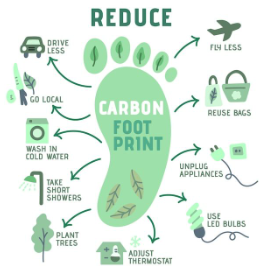
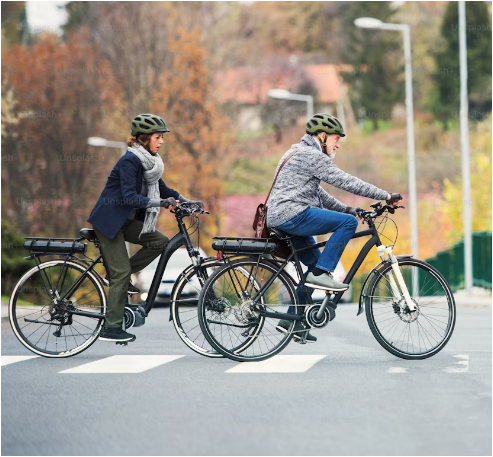


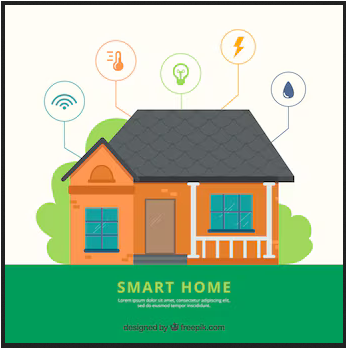

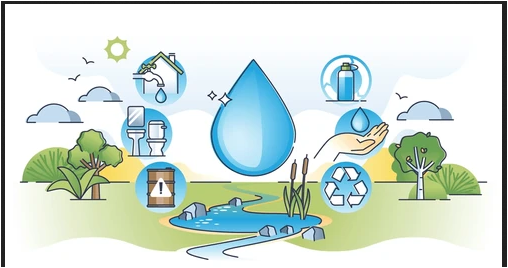


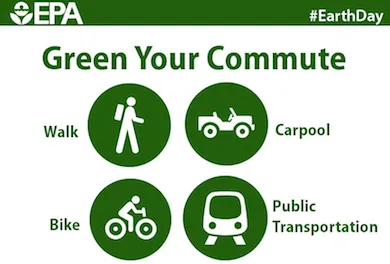






Post a Comment